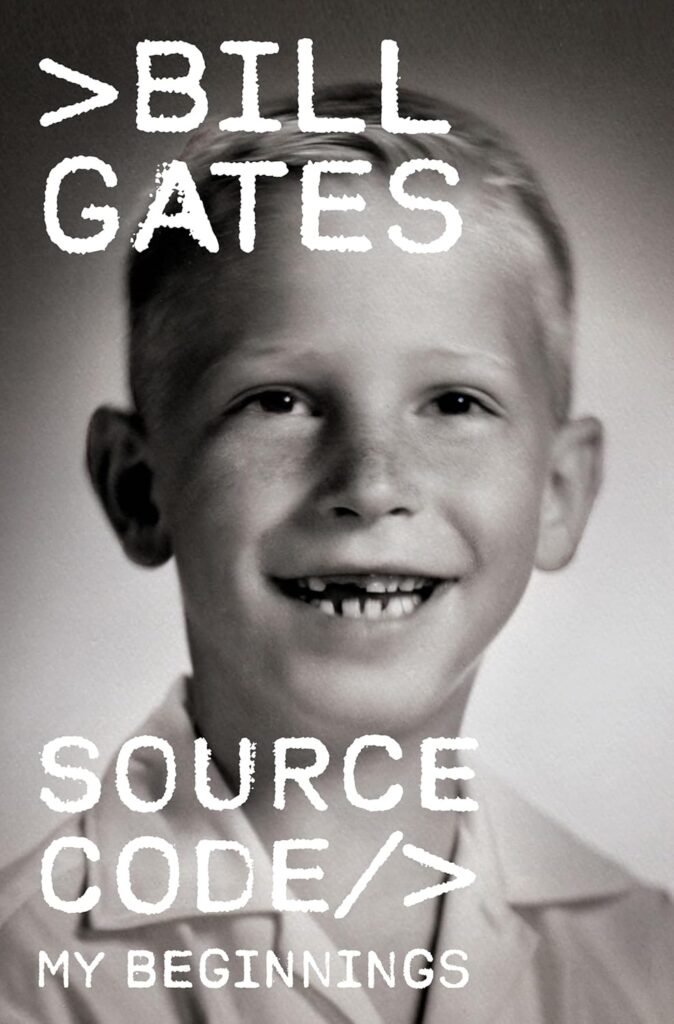If you’ve ever cracked open Bill Gates’s memoir, Source Code: My Beginnings, you know it’s not just another “look how successful I am” book. It dives into the nitty-gritty of Gates’s childhood, relationships, and how one nerdy kid from Seattle helped kickstart a tech movement that transformed the planet. These kinds of origin stories? They’re the secret sauce to understanding how someone like Gates goes from tinkering in a garage (or more accurately, a private school computer lab) to becoming, well, Bill Freakin’ Gates.
So, let’s rewind the clock to Gates’s early days in Seattle, where his obsession with software and problem-solving began. Spoiler alert: it’s the perfect backdrop for a future tech mogul.
Table of Contents
Bill Gates’s Early Life in Seattle
Seattle in the ’50s might not sound like the tech hub we know today, but for Gates, it was a launchpad for intellectual exploration. With the rainy weather keeping everyone indoors (let’s be real, this probably helped), Gates was free to dive into books, debates, and, eventually, computers.
Family Background and Early Influences
Bill Gates didn’t just appear out of thin air. His family played a huge role in shaping his competitive and intellectual mindset. His father, William H. Gates Sr., was a sharp attorney, and his mother, Mary Gates, served on several boards, including at IBM. Yup, that IBM—the one that Microsoft later worked with. Coincidence? Probably not. Gates once mentioned how dinnertime at his house was like debate club 2.0, where everyone argued (constructively… mostly) about everything from politics to hypothetical moral dilemmas. Imagine your Monopoly game nights, but with fewer bank errors in your favor and way more intellectual chaos.
A fun nugget from the memoir? His grandmother used to pay him for good grades. It’s like a proto-version of LinkedIn recommendations: hustle now, cash in later.
Education at Lakeside School
Now, let’s talk about Lakeside School—the real MVP in Gates’s education. This private school in Seattle had one thing most schools didn’t in the ’60s: access to a computer. And not just any computer, but a terminal connected to a General Electric system that cost more than my first car. Gates’s exposure to programming at Lakeside wasn’t just pivotal—it was life-altering. Fun fact: he hacked his school’s scheduling software with his buddies to ensure he was in the classes with the most girls. Classic Gates.
Without Lakeside’s early embrace of tech, Gates might never have written his first line of code or met his future Microsoft co-founder, Paul Allen, at the same school. The stars aligned, and the world of software hasn’t been the same since.
Childhood Friendships and Personal Loss
Speaking of Paul Allen, Gates’s friendship with him was like peanut butter meeting jelly—perfectly complementary. But another friend from those early days, Kent Evans, played a key role in Bill’s life, pushing his competitive nature to new heights. Tragically, Kent passed away in high school, a loss that, according to Gates, deeply impacted him. It reminded him of life’s fragility but also fueled his drive to maximize every opportunity.
The Genesis of Microsoft’s Founding
Okay, so childhood in Seattle was Gates 1.0. But let’s fast-forward to Gates 2.0—Microsoft’s early days. Spoiler: It’s just as fascinating, but with higher stakes.
First Programming Experiences
Teenage Gates? He was knee-deep in programming projects, basically inhaling code like it was oxygen. By 15, he and Paul Allen had already built a traffic-counter program they sold for $20,000. While most of us were figuring out how to mow lawns for minimum wage, Gates and Allen were building software during the infancy of computing.
Partnership with Paul Allen
Allen and Gates were like Batman and Robin, if Robin also happened to be a programming genius. Their partnership was rooted in a mutual love for all things nerdy and an ambitious plan to dominate the software universe. They read about the Altair 8800 (an early personal computer) in Popular Electronics and knew this was their shot. Together, they wrote a Basic interpreter for the Altair, and boom—Microsoft was born in 1975.
Albuquerque and Microsoft’s Beginnings
Fun story: Microsoft’s first HQ wasn’t in Seattle but Albuquerque, New Mexico. Why Albuquerque? That’s where the Altair folks were. The move was risky (and Albuquerque isn’t exactly known as Silicon Valley 2.0), but it paid off. Early Microsoft was scrappy, with Gates pulling all-nighters debugging code. It was gritty, chaotic, and utterly brilliant.
Impact of Early Computing and Programming
By the mid-’70s, the tech world was shifting fast, and Gates had a front-row seat. This was personal computing’s awkward teenage years, and guys like Gates were the ones setting the tone.
The Rise of Personal Computing
The ’70s marked the dawn of personal computers, a cultural shift that turned mega-computers for businesses into smaller, personal devices. Gates saw the future before most of the world even knew they needed it. His vision? Software for every person, business, and home—basically the Microsoft Word document you probably procrastinated on this week.
Shared Nature of Early Software Development
It’s easy to imagine Bill as a lone wolf coding wizard, but the reality? Early software development was surprisingly collaborative. From creating BASIC with Allen to networking with other nerds in Albuquerque, Gates thrived in the share-and-build environment of early programming. That spark set the stage for Microsoft’s future dominance.
Lessons from Source Code: My Beginnings
Let’s zoom out. Gates’s memoir isn’t just a history book—it’s full of candid insights, lessons, and a lot of “aha!” moments.
Personal Reflections and Shortcomings
One thing I respect about Gates? He doesn’t shy away from his flaws. He admits to being stubborn, hyper-competitive, and well, a pain in the neck at times. But those same qualities made him a leader who didn’t tolerate mediocrity. His obsession with details could sometimes border on extreme, but it’s also why Microsoft wasn’t just a company—it was the company.
The Role of Mentors and Relationships
Gates credits a whole network of mentors and supporters—including his parents, Paul Allen, and his Lakeside teachers—for lifting him up. It’s a reminder that no tech titan (or, really, anyone) gets anywhere entirely solo. The memoir’s stories of teamwork and friendship are as inspiring as they are heartwarming.
Inspiration for Aspiring Entrepreneurs
For anyone dreaming big but feeling tiny, Gates’s story is proof that your beginnings matter. But not in a “you need to be born into privilege” way (though, let’s be honest, that did help). Instead, it’s about finding your passion, surrounding yourself with the right people, and hustling like your future depends on it—because it does.
Conclusion
Bill Gates’s journey, as captured in Source Code: My Beginnings, is your cheat sheet to ambition. From his quirky childhood in Seattle to launching Microsoft from Albuquerque, his story is a testament to the power of curiosity, relationships, and plain old hard work. It’s not about being perfect; it’s about starting somewhere—and starting early.
And who knows? Maybe your own “source code” is the foundation for something just as transformative. All it takes is a bit of online inspiration and maybe a few all-nighters (though I recommend coffee over soda and pizza).

